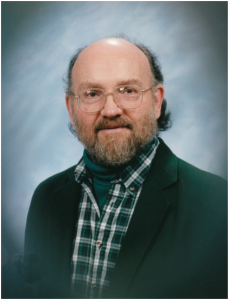Fixing Speakers
By Richard Honeycutt
In this article, Richard Honeycutt gives some good advice on fixing speakers.
A prospective client recently asked how I would recommend adding tweeters to the existing speakers in his church. This question brought up years of memories! When I first started doing sound system work about 0.4 centuries ago, I had already been home-building speaker systems since high school. Naturally, I knew that I was an expert in speaker design—I was a legend in my own mind! So in a couple of cases, I did modify some old PA speakers and achieved slight improvements. But along the way, I found such attempts to be a losing battle, and over the years, I have found some reasons why. The most common request I have heard has been to replace the woofer with one that the customer thinks “sounds really good”. Figure 1 shows the frequency response of a 15″ woofer made by a well-known manufacturer for sound reinforcement.
Figure 2 shows the response of a 15″ instrument speaker made by the same manufacturer.
The two are pretty similar below 250 Hz, except for a 2-dB difference in sensitivity. But used in a system that crosses into the mid-range at or below 1500 Hz, the two will sound very different because of different mid-range response of the two woofers. Even with a 2-kHz crossover, the difference in sound will be noticeable as ragged and perhaps exaggerated mid-range response.
Less obvious to the would-be “speaker re-engineer” is the change in low-frequency response caused by the difference in parameters ( cone mass, compliance, electrical and mechanical Q) of the two woofers. Figure 3 shows the simulated response of a vented system using the 15″ pro-sound speaker whose response is shown in Figure 1. Figure 4 shows the instrument speaker in the same cabinet, with no changes in the box tuning. Notice the 4-dB low-frequency hump—not usually desirable! While these differences can be more dramatic when vented boxes are used, they can still be noticeable with sealed cabinets as well. (Simulated low-frequency responses do not show effects such as a ragged mid-range response caused by cone breakup. Simulated LF responses show what would happen if the cone behaved like a perfect piston.)
A third land-mine is speaker impedance. It is not always easy to determine the impedance of an OEM driver that is being “upgraded”. Figure 5 shows the frequency response of a not-too-good 3-way speaker system, as designed, using an 8-ohm mid-range driver. Figure 6 shows the same system with a 4-ohm mid-range driver having characteristics very similar to the 8-ohm one, except for impedance.
Note the 2-dB lower output in the mid-range (800 Hz to 2 kHz) when the 4-ohm driver is used. This is caused by the attenuator in the crossover, intended to correct for sensitivity differences between drivers. The attenuator does not work correctly with the wrong driver impedance.
Another impedance-related issue is amplifier loading. Figures 7 and 8, respectively, show the impedance seen by the amplifier feeding a different 3-way speaker system, first, as designed (two paralleled 8-ohm mid-range drivers), and then, with two paralleled 4-ohm drivers substituted.
Notice how heavily the amplifier is loaded with the parallel 4-ohm mid drivers. Some amps would not like this load. They may let the smoke out.
Other issues that could cause trouble from haphazardly swapping out drivers include differences in size and shape, even for drivers having the same nominal size; differences in sensitivity (dB SPL @ 1 W @ 1 meter); differences in cone profile (conical versus curvilinear) which will affect the directivity at mid and high frequencies; and differences in power handling (“crispy critters”?)
So, as Paul Harvey says, the rest of the story: I recommended that my prospective client replace the old speakers with new ones that are professionally designed to do what he wants. Otherwise…
 Richard A. Honeycutt developed an interest in acoustics and electronics while in elementary school. He assisted with film projection, PA system operation, and audio recording throughout middle and high school. He has been an active holder of the First Class Commercial FCC Radiotelephone license since 1969, and graduated with a BS in Physics from Wake Forest University in 1970, after serving as Student Engineer and Student Station Manager at 50-kW WFDD-FM. His career includes writing engineering and maintenance documents for the Bell Telephone System, operating a loudspeaker manufacture company, teaching Electronics Engineering Technology at the college level, designing and installing audio and video systems, and consulting in acoustics and audio/video design. He earned his Ph.D. in Electroacoustics from the Union Institute in 2004. He is known worldwide as a writer on electronics, acoustics, and philosophy. His two most recent books are Acoustics in Performance and The State of Hollow-State Audio, both published by Elektor.
Richard A. Honeycutt developed an interest in acoustics and electronics while in elementary school. He assisted with film projection, PA system operation, and audio recording throughout middle and high school. He has been an active holder of the First Class Commercial FCC Radiotelephone license since 1969, and graduated with a BS in Physics from Wake Forest University in 1970, after serving as Student Engineer and Student Station Manager at 50-kW WFDD-FM. His career includes writing engineering and maintenance documents for the Bell Telephone System, operating a loudspeaker manufacture company, teaching Electronics Engineering Technology at the college level, designing and installing audio and video systems, and consulting in acoustics and audio/video design. He earned his Ph.D. in Electroacoustics from the Union Institute in 2004. He is known worldwide as a writer on electronics, acoustics, and philosophy. His two most recent books are Acoustics in Performance and The State of Hollow-State Audio, both published by Elektor.









